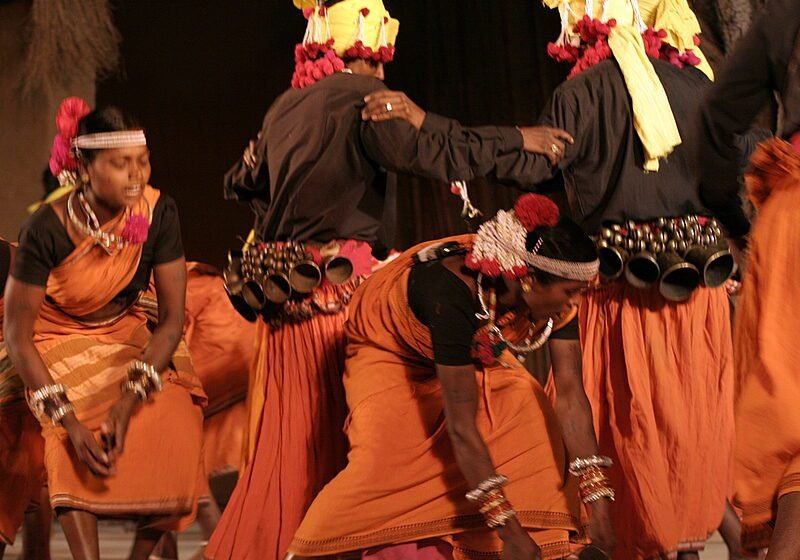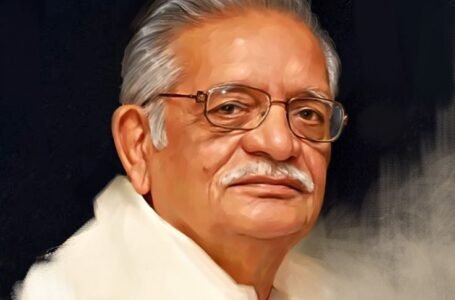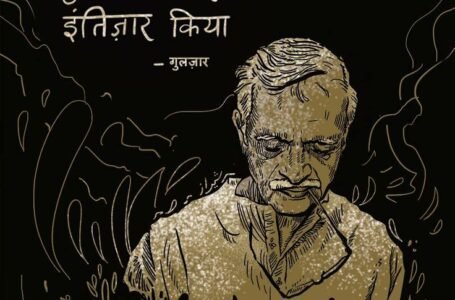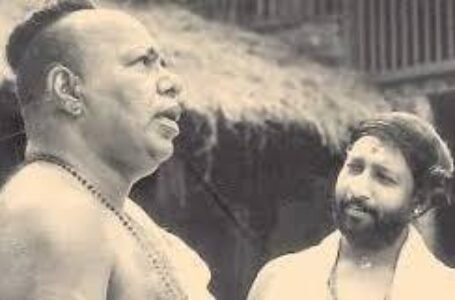Kaksar Dance: A Dying Legacy of the Abhujmaria Tribe
- Ancient history Asian history
 Jayshree Waghela
Jayshree Waghela- February 24, 2025
- 0
- 12

The Kaksar Dance, a captivating folk tradition of the Abhujmaria tribe, is a cultural gem rooted in the regions of Chhattisgarh and Madhya Pradesh. This dance is performed primarily as an expression of gratitude and a prayer for a prosperous harvest before the onset of the monsoon season. However, its significance extends beyond agricultural rituals—it serves as a social and cultural platform where young men and women meet and choose their life partners. Despite its rich cultural and social value, the Kaksar Dance is slowly fading due to changing agricultural practices, modernization, and a gradual decline in the preservation of tribal customs. This article delves into the origins, cultural significance, performance style, symbolism, and the challenges faced by this beautiful tradition in the modern world.
Historical and Cultural Background
The Abhujmaria tribe, the primary custodians of the Kaksar Dance, inhabit the dense, forested regions of Abujhmarh in Chhattisgarh and parts of Madhya Pradesh. This tribe is known for preserving age-old customs and living in harmony with nature. Kaksar, the deity from whom the dance derives its name, is believed to govern agricultural prosperity and fertility. The dance is an annual ritual, performed just before the monsoon rains, to invoke the deity’s blessings for a successful crop cycle.
The isolated geography of the Abujhmarh region has helped the tribe maintain their cultural practices for centuries. However, as external influences seep into their lifestyle and modernization takes hold, many of these unique traditions, including the Kaksar Dance, are under threat.
The Ritual Significance of Kaksar Dance
At its core, the Kaksar Dance is a prayer ritual. The tribe believes that by performing the dance, they can appease the deity and ensure a fruitful harvest. This dance is not only a spiritual exercise but also an essential part of the tribe’s social fabric. The performance typically takes place in open fields or community gathering spaces, drawing the entire village together to celebrate unity, fertility, and life.
An Important feature distinguishing Kaksar from other agricultural dances is its role in facilitating matrimonial alliances. During the dance, young men and women interact freely, breaking the rigid social boundaries that often characterize traditional societies. The dance, therefore, becomes a courtship ritual where romantic bonds are formed, and future marriages are arranged. Once a pair expresses mutual affection during the dance, the elders of the tribe officiate their union in a formal ceremony later.
Performance and Costumes
The Kaksar Dance is a visually striking and rhythmically intricate performance. It involves two semicircular formations—one composed of young men and the other of young women. Both groups move gracefully in synchronized patterns while engaging in distinct yet complementary movements.
Men’s Attire and Movements:
The male dancers wear elaborate costumes, the most distinctive feature being a belt adorned with multiple large and small jingle bells (ghungroos) tied to the back of their waists. As they move, the rhythmic jingling of these bells amplifies the percussion sounds from accompanying musical instruments. The boys’ movements are bold and energetic, symbolizing strength and the readiness to protect and provide. Their circular motions mirror the agricultural cycle, representing the eternal connection between humans and the land.
Women’s Attire and Movements:
The female dancers carry waist-high iron rods, with a cluster of small bells attached to the top. Dressed in vibrant traditional attire, they hold these rods in their right hands while their left arms encircle the waist of the dancer beside them. This physical connection symbolizes communal harmony and collective strength. As they strike the rods against the ground in rhythm with the music, the sharp metallic sound blends with the jingling bells worn by the men, creating a rich auditory tapestry.
Musical Accompaniment:
The musical ensemble for the Kaksar Dance consists of traditional instruments like the Mandar and Timki for percussion, while the Bansuri (flute) provides the melodic component. The interplay of these instruments creates a dynamic soundscape that enhances the dramatic effect of the dance. The Mandar, a large drum, drives the dance’s tempo, while the Timki, a smaller drum, adds rhythmic complexity. The Bansuri’s soft, haunting melody evokes a sense of longing and hope, reinforcing the emotional themes of the performance.
Symbolism in Kaksar Dance
Every element of the Kaksar Dance carries profound symbolic meaning:
- The Circular Formation: The circular patterns performed by both groups symbolize the cycle of life and the agricultural seasons. This shape reflects the tribe’s belief in continuity, community, and the eternal relationship between humanity and nature.
- Jingle Bells: The ghungroos worn by the men represent fertility and abundance. The sound of the bells signifies the blessings of the harvest and the deity’s approval.
- Iron Rods: The iron rods carried by the women symbolize resilience and the tribe’s deep-rooted connection to the earth. Striking the rods against the ground is believed to awaken the fertility of the soil, ensuring a successful harvest.
- Courtship Ritual: The dance serves as a public, yet intimate, space where young people can express romantic interest. This practice reflects the tribe’s progressive view of marriage, allowing individuals to choose their partners within a communal context.
Decline of the Kaksar Dance
Despite its cultural richness, the Kaksar Dance is rapidly declining due to several factors:
- Modern Agricultural Practices: With the advent of industrialized farming techniques, the spiritual connection to nature that underpins the Kaksar ritual is diminishing. Traditional agricultural festivals are no longer seen as necessary for ensuring a good harvest.
- Urban Migration: Many young members of the Abhujmaria tribe are migrating to urban areas in search of employment, leading to a loss of interest and participation in indigenous cultural practices.
- Cultural Erosion: The influence of mainstream media and external cultures is leading to a gradual disinterest in traditional dances. Younger generations often perceive these practices as outdated or irrelevant.
- Lack of Documentation: The Kaksar Dance, like many tribal traditions, has been preserved through oral transmission rather than written records. This lack of documentation makes it vulnerable to being forgotten as elders pass away without transmitting their knowledge.
Efforts to Preserve the Kaksar Dance
In recent years, cultural preservationists and government initiatives have made efforts to safeguard the Kaksar Dance and similar tribal traditions:
- Cultural Festivals: State-sponsored cultural festivals now provide platforms for tribal communities to showcase their dances. This not only promotes awareness but also fosters pride among the tribes.
- Documentation Projects: Researchers and anthropologists are working to document the Kaksar Dance through video recordings, academic studies, and museum exhibits.
- Community Workshops: Local organizations conduct workshops to teach younger generations about the cultural significance and performance techniques of the Kaksar Dance.
- Tourism Initiatives: Cultural tourism in Chhattisgarh and Madhya Pradesh is being promoted to encourage sustainable ways of preserving and celebrating tribal dances like Kaksar.
Conclusion
The Kaksar Dance of the Abhujmaria tribe is more than a ritualistic performance—it is a living testament to the tribe’s values, beliefs, and way of life. It embodies themes of fertility, community, and personal freedom while providing a unique courtship ritual that empowers young people to choose their life partners. However, modernization and changing social dynamics threaten to erase this cultural treasure. Preserving the Kaksar Dance requires a collaborative effort between tribal communities, cultural organizations, and government bodies. By fostering awareness and appreciation, there is hope that future generations will continue to perform and celebrate this extraordinary dance, keeping the spirit of the Abhujmaria tribe alive.


